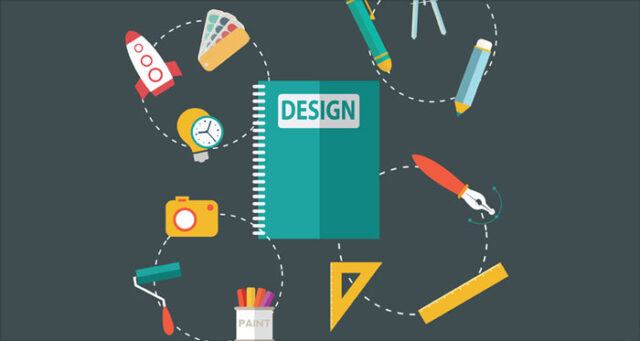
The whole “hindsight is 20/20” rings true in just about every situation, especially when it comes to choosing a career path. Had I known then what I know now, it wouldn’t have impacted my decision to become a graphic designer, but it would have made the road to getting there a bit smoother. We can all say that in some respect, right? If you could give your younger self a few pointers or tips, it would likely help you avoid some costly and even painful missteps, right?
Well, I can’t necessarily deliver on a time machine at the moment, but what I can do is share a few tips with you (or anyone else wanting to become a designer) from someone who has been there and done that. So pay attention and take these tips into consideration, as they might just help you determine if you really want to get serious about becoming a designer.

Image source: Deposit Photos
1. You work for the client
I had grand aspirations that I was going to have total artistic authority in everything I created as a graphic designer, but in reality, it all comes down to what the client wants. While there are some exceptions, your work is often less about your artistic preferences and more about meeting your clients’ expectations and giving them what they ask for. Keep in mind, you’ll be designing for your clients, not yourself.
With that being said, it is likely that your designs won’t be the “coolest looking” ones out there. That really doesn’t matter. What does is that you are solving the problems your clients need you to.
As a slight caveat, though, that should not stop you from offering your artistic expertise as merited. You simply need to be effective at communicating to and advising your clients about why you make your specific design choices. Just remember that at the end of the day, the client is paying for a service, and you need to be the one who delivers.
Learning to adhere to my clients’ wishes was one of my biggest hurdles in the beginning. As designers, we tend to think more like artists and less like problem solvers. If you can change your mindset, though, you will thrive even as a new designer.
2. You need to prioritize your portfolio
As a new designer, you’ll really have to break your way into the field, so you need an effective way to represent your work. Most people have been fed the line that your GPA is important, and while it is, for a designer, your portfolio is really what will land you the next job. You’ll want to keep in mind too that the most effective portfolios are more than just a PDF file loaded with your personal work.
One of the best ways to promote yourself today is to create a website. And honestly, there is very little way around it. You’ve already invested time in creating the designs to best showcase your ability, so you might as well take the extra time to design an eye-catching website to display it.
Sending a potential employer, a link to your website portfolio is much more professional than emailing a giant attachment. Plus, an online portfolio creates the potential for new clients to stumble across your work without you having to do all the legwork to find them.
Along that same line, it will behoove you to have an extensive collection of unique cover letters. There are few things that are more off-putting to potential employers than generic cover letters. Make yourself stand out with a unique cover letter and a brilliant portfolio design to get the most job offers.
3. Your time isn’t necessarily your own
As a new designer, I went in with the idea that I’d largely be able to work when and how I wanted. Not true. When you have a looming deadline on a project, nothing matters except reaching the deadline.
You won’t be working when and where you want. The hours will be long, and there will be days and nights that all run together when you are closing in on a project.
But don’t let the idea of working hard, long hours scare you. While you will work at unconventional hours, the feeling of victory on a project completed and accepted will carry you through the tough days. Likewise, learning to budget your time effectively will go a long way to supporting your success.
Now that you understand what it really looks like to become a graphic designer and have a few tips to help you get there, you should be better equipped to take the next step. This small glimpse into what it takes to pursue a career in graphic design will hopefully guide you make the most of your experience and get started right.













